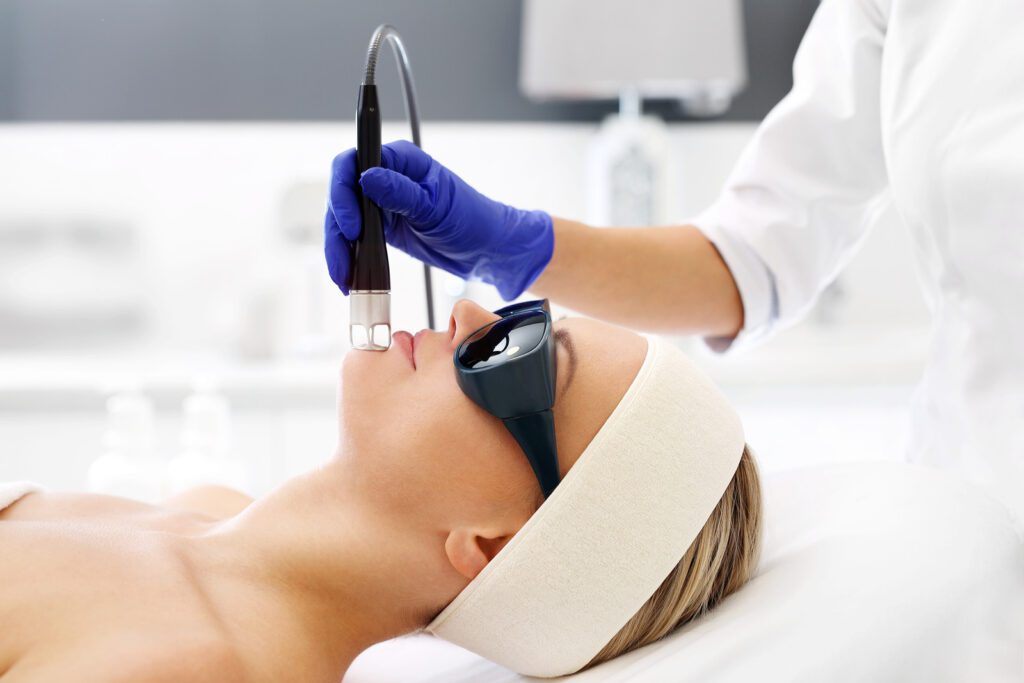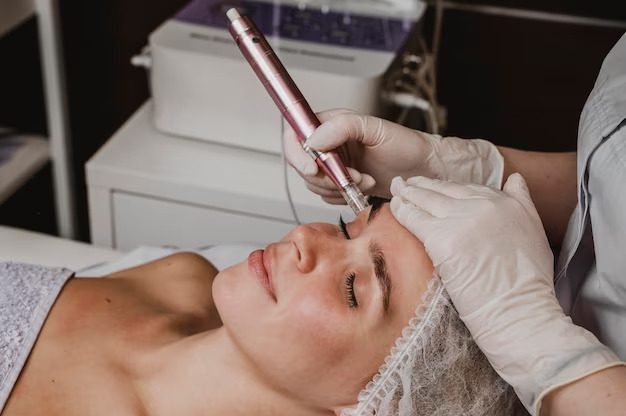
Welcome to a fascinating journey into the world of laser treatment for dark spots and pigmentation.
Today, we’ll delve into the science behind this innovative approach to achieving clearer, radiant skin by targeting those unwanted dark spots.
If you’re tired of trying numerous creams and remedies without success, laser therapy might be the solution you’ve been seeking. Let’s explore the wonders of this cutting-edge procedure together!
Understanding Dark Spots and Pigmentation
Dark spots, also known as hyperpigmentation, are areas of the skin that appear darker than the surrounding skin due to increased melanin production. Various factors, including sun exposure, hormonal changes, acne scars, or aging, can cause these spots.
How Laser Treatment Works for Dark Spots
Laser treatment for hyperpigmentation and dark spots operates on selective photothermolysis.
The laser emits intense light energy absorbed by the melanin in the dark spots, causing the pigment to break down.
The surrounding skin is spared from damage, making it a precise and effective hyperpigmentation treatment method for targeting specific areas.
The Science of Targeting Pigmentation

Laser treatment’s success lies in lasers’ ability to emit specific wavelengths that target melanin. Different types of lasers are used for various skin types and types of hyperpigmentation. As the melanin in the dark spots absorbs the laser’s energy, it breaks down, gradually fading the areas.
Factors Affecting Treatment Efficacy
Various factors can influence the effectiveness of laser treatment for dark spots. Skin type plays a crucial role, and certain lasers are more suitable for specific skin tones.
The age and depth of the dark spots also impact removal success, with deeper spots potentially requiring additional sessions.
The Laser Treatment Process
Before undergoing laser treatment for dark spots, it’s crucial to consult with a qualified practitioner. They will assess your skin condition and recommend the most suitable laser.
Protective measures are taken during the procedure to ensure your comfort and safety. The laser is then expertly applied to target the dark spots, with the patient experiencing only minimal discomfort.
Risks and Potential Side Effects
As with any medical procedure, laser treatment for dark spots carries potential side effects. Temporary redness, swelling, and mild discomfort are common reactions that usually subside within a few days.
While rare, complications such as temporary hyperpigmentation or hypopigmentation may occur. Following post-treatment care instructions diligently can minimize these risks.
The Importance of Multiple Sessions

Achieving significant improvement in dark spots often requires multiple laser sessions. The intervals between sessions allow the skin to heal and the body to naturally eliminate the broken-down melanin. Patience and adherence to the treatment plan are essential for optimal results.
Alternative Treatments and Comparisons
While laser therapy is highly effective for dark spots, it’s also essential to consider other treatment options. These may include topical creams, chemical peels, or microdermabrasion. Each approach has pros and cons, but laser treatment stands out due to its precision and ability to target specific pigmented areas.
Conclusion
Understanding the science behind laser treatment for dark spots is crucial for making informed decisions about your skincare journey.
If you’re ready to say goodbye to those unwanted dark spots and embrace clearer, more radiant skin, consult a qualified professional who can guide you through laser treatment.
Your path to achieving a flawless complexion begins today!


